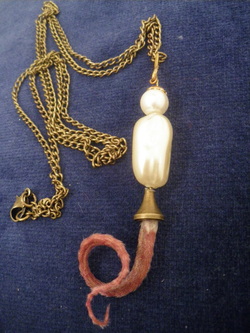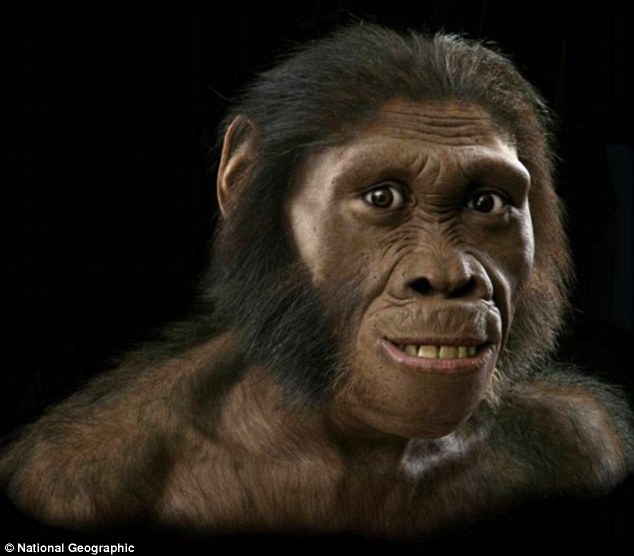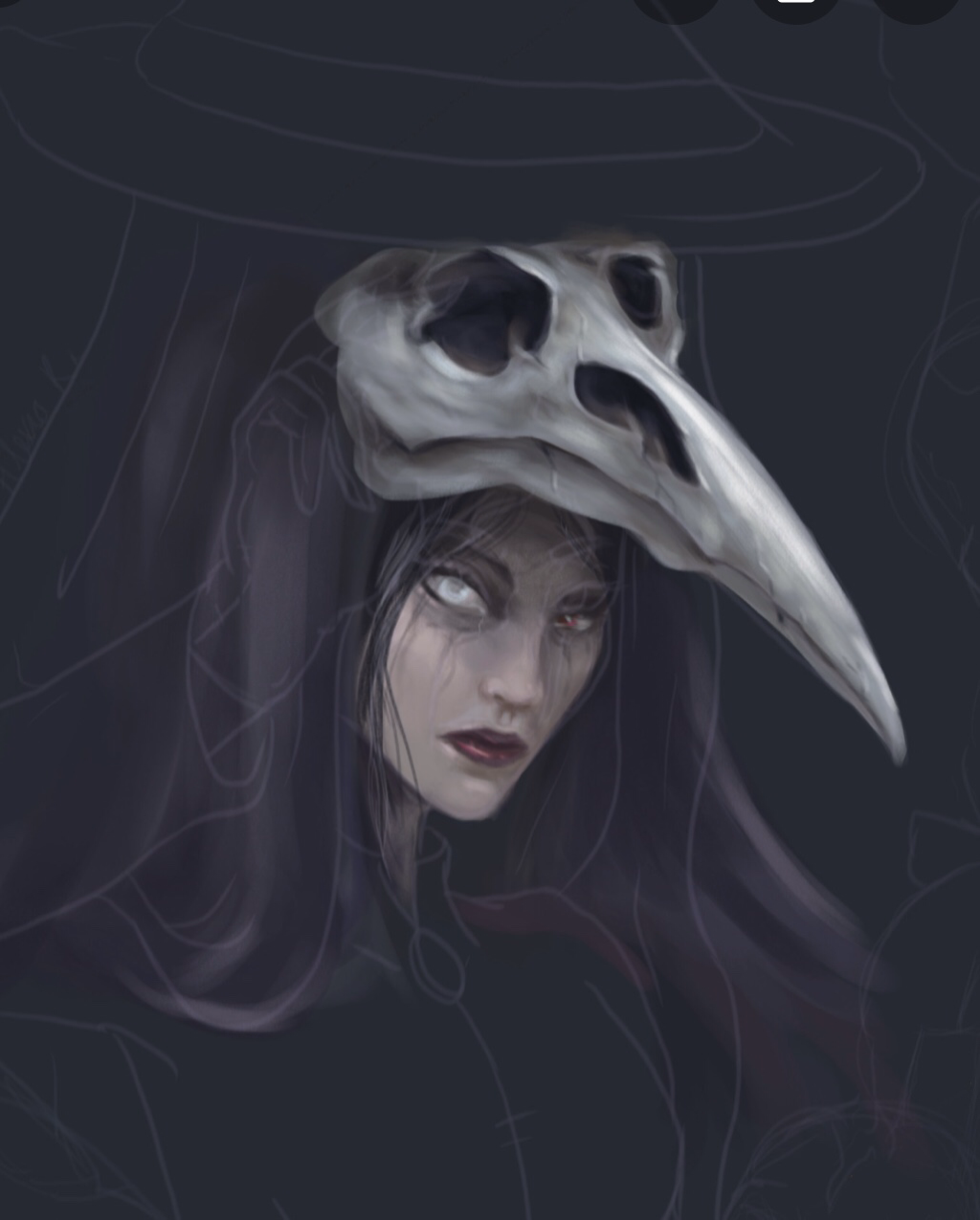THE ITEMS SEEN ON THIS PAGE ARE ALWAYS AVAILABLE, EACH ITEM WILL BE MADE TO ORDER.
Australopithicus sedipa Specimen: Hand of MH2 Date: 1.977-1.98 million years. This is a museum cabinet piece, from the Natural History Museum London collection

This cast is off an adult female, they walked upright like us and stood about 4ft 4inches tall. If you look at the pics I have included the image of what these creatures are believed to of looked like. A real cross between man and ape.
The fossils were found in sedimentary remains of a deeply eroded cave where they were laid down by a single debris flow which carried them to their last resting place, until discovery nearly 2 million yrs later by the human. (crazy!!! its hard to get your head around it)
The fossil indicates the evolution of the hand to what it is today. It has a relatively long thumb compared to the fingers, (even longer than modern human, see pics) which allows precision grip for tool making, but, also displays traits that suggest the hand was still capable of powerful flexation needed for climbing trees.
Another fascinating fact is, the near complete skeleton fossils were found amongst complete skeletons of sabre-toothed cats, antelopes, rabbits and mice. To think this was walking the earth at the same time is mind boggling.
Well! here's your chance to own a piece of real prehistoric history. The cast is of a high quality resin and has picked up every detail of the original. The original is housed deep in the bowels of the museums science fraternity for study purposes. Pic 2, and 4 (where its in the palm of a human) is of the original. Almost all of the bones you see in museums are casts as the originals are locked away. You will also receive two pages of info that came from the Natural History Museums own archive book, identifying and authenticating the piece.
The fossils were found in sedimentary remains of a deeply eroded cave where they were laid down by a single debris flow which carried them to their last resting place, until discovery nearly 2 million yrs later by the human. (crazy!!! its hard to get your head around it)
The fossil indicates the evolution of the hand to what it is today. It has a relatively long thumb compared to the fingers, (even longer than modern human, see pics) which allows precision grip for tool making, but, also displays traits that suggest the hand was still capable of powerful flexation needed for climbing trees.
Another fascinating fact is, the near complete skeleton fossils were found amongst complete skeletons of sabre-toothed cats, antelopes, rabbits and mice. To think this was walking the earth at the same time is mind boggling.
Well! here's your chance to own a piece of real prehistoric history. The cast is of a high quality resin and has picked up every detail of the original. The original is housed deep in the bowels of the museums science fraternity for study purposes. Pic 2, and 4 (where its in the palm of a human) is of the original. Almost all of the bones you see in museums are casts as the originals are locked away. You will also receive two pages of info that came from the Natural History Museums own archive book, identifying and authenticating the piece.
THE OXFORD DODO.

We all know the dodo is extinct, but did you know that there are very few remains of the dodo left to look at today? In fact, the bones and skin samples at the Museum in Oxford are probably the most complete set of remains held by any museum around the world.
This photograph shows the skin sample that was saved from the head of the dodo. It belonged to a dodo that was brought to London in the 1630s. It is very important as it has been used to get the dodo's DNA - from this work we have learnt that the dodo was related to the pigeon!
One of the most (in)famous stories in zoological museum history is how the world’s only stuffed specimen of the dodo Raphus cucullatus - Mauritius's best-known species of extinct bird - was allegedly discarded and burnt on 8 January 1755 on the orders of a committee of trustees at Oxford’s Ashmolean Museum because they considered it looked tatty, and how an assistant had the foresight to rescue its head and one of its feet before the flames reached them. As will be revealed later however, this story is spurious. What is true, conversely, is that those precious relics were later transferred to the University Museum of Zoology, where they are now among its most prized specimens.
"There was a long-held belief that this, by then unique, stuffed Dodo was thrown onto a fire in 1755, and that only the head and a foot were rescued from the flames...In fact, its removal from exhibition was a curatorial decision made to preserve what was left of the by then highly degraded specimen (Ovenell 1992). The salvaged remains included the skin of the head, some feathers and a foot."
THE DODO CAST.

My casts are exact copies off the original cast above, Each cast is pigmented to match the real thing, the pattern and colouring are replicated. £80.00 It's the nearest you are ever going to get to meeting a dodo!
PAZUZU, Iconic evil, portrayed in the disturbing film and book. |
|
|
About Pazuzu!
Pazuzu is a fictional character and the main antagonist in The Exorcist horror novels and film series created by William Peter Blatty. Blatty derived the character from Assyrian and Babylonian mythology, where Pazuzu was considered the king of the demons and of the wind, and the son of the god Hanbi. In The Exorcist Pazuzu appears as a demon who possesses Regan MacNeil.
Pazuzu is often depicted as a combination of animal and human parts with its right hand pointing upwards and its left hand downwards. It has the body of a man, the head of a lion or dog, eagle-like taloned feet, two pairs of wings, a scorpion's tail, and a serpentine penis.
Pazuzu is a fictional character and the main antagonist in The Exorcist horror novels and film series created by William Peter Blatty. Blatty derived the character from Assyrian and Babylonian mythology, where Pazuzu was considered the king of the demons and of the wind, and the son of the god Hanbi. In The Exorcist Pazuzu appears as a demon who possesses Regan MacNeil.
Pazuzu is often depicted as a combination of animal and human parts with its right hand pointing upwards and its left hand downwards. It has the body of a man, the head of a lion or dog, eagle-like taloned feet, two pairs of wings, a scorpion's tail, and a serpentine penis.
Unique freak jewellery. Tail pendant.

The tail pendant is a real mouse or rat tail that has been added to beads to make an unusual neck ornament. When ordering state whether you want mouse or rat tail. The rats tail is obviously longer and fatter than the mouse.
Mouse tail...£35.00
Rats tail....£45.00
Mouse tail...£35.00
Rats tail....£45.00
























